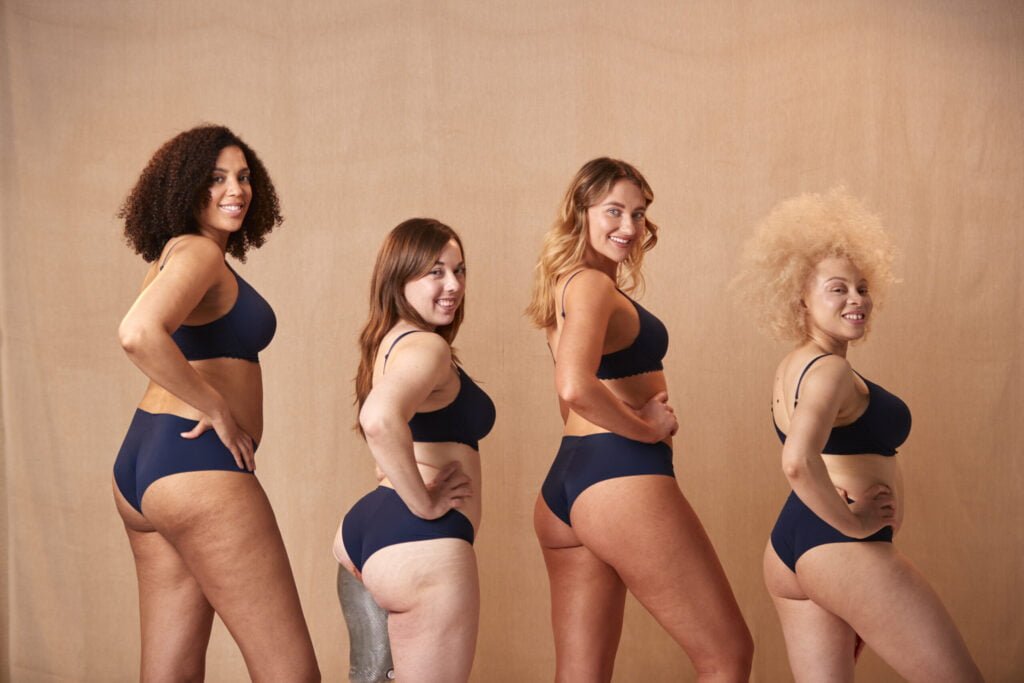In an era of digital dominance, where our daily lives are punctuated by the constant flood of images, messages, and societal expectations, the way we perceive ourselves and others is under constant scrutiny. Amid this social media frenzy, the battle against body shaming—particularly fat shaming—has gained significant momentum. Yet, while we’ve come a long way, there’s still much ground to cover. Fat shaming has deep historical roots and is intertwined with cultural norms, personal biases, and media portrayals. This article delves into the ongoing journey to break free from fat shaming and embrace body positivity and fat liberation fully.
The Evolution of Body Image and the Rise of Fat Liberation
Our understanding of body image has evolved considerably over the years. Once upon a time, curvier bodies were seen as symbols of wealth, fertility, and beauty. As the pendulum of societal standards swung in various directions, the “ideal” body type often shifted. Today, while we see a wider representation in media, we still face immense pressure to fit into a particular mold. Enter the scene: plus size bathing suits. These are not just items of clothing but symbols of resistance against a culture that has for too long dictated who gets to be seen and celebrated on the beach or at the pool.
However, it’s essential to understand that fat liberation isn’t just about plus-sized representation in media or fashion. It’s about challenging and changing the deeply ingrained societal norms that equate thinness with worthiness, health, and success. It’s about recognizing that all bodies, regardless of size, deserve respect, autonomy, and care.
Colors of Shame and the Impact on Mental Health

The hues of shame painted by society are varied and deep. Fat shaming, whether overt or covert, has a profound impact on one’s mental health. Comments, unsolicited advice, derogatory memes, or even “well-intentioned” concerns about someone’s health can erode their self-esteem and body confidence.
Research indicates a direct link between body shaming and mental health issues, including depression, anxiety, and eating disorders. The mental toll of constant judgment and criticism is heavy, leading individuals to internalize these negative beliefs, manifesting in self-loathing, avoidance of social situations, or overcompensating behaviors.
Moreover, this kind of stigma creates barriers to accessing healthcare. Individuals may delay or avoid visiting doctors out of fear of being shamed or not being taken seriously because of their size. This delay can lead to undiagnosed or untreated health issues.
The Styles of Resistance: Body Positivity and Beyond
While the body positivity movement has been instrumental in challenging societal norms around beauty and promoting self-love, some critics argue that it doesn’t go far enough in dismantling the systems of oppression that fat individuals face. They contend that while body positivity celebrates all body types, it sometimes shies away from addressing the discrimination and systemic barriers that larger-bodied individuals confront.
This is where fat liberation comes in. This movement, which originated in the 1960s, goes beyond mere acceptance. It demands rights and equal treatment for fat people. It’s not just about feeling good in one’s skin but ensuring that society doesn’t discriminate based on body size. Fat liberation emphasizes the intersectionality of body size with other forms of discrimination, such as race, gender, and disability.
Both body positivity and fat liberation offer different tools for resistance. While body positivity might promote self-love through affirmations and inclusive media representation, fat liberation might push for policy changes or challenge medical biases against larger-bodied individuals.
Breaking Free: Steps Towards a More Inclusive Future
Achieving a world free from fat shaming requires concerted efforts at individual, community, and systemic levels. Here are some ways we can all contribute:
- Self-Reflection: Challenge your own biases. Understand where they come from and why they exist. Educate yourself about the myths surrounding health and body size.
- Challenge Fatphobia: If you witness body shaming, speak out against it. This might mean calling out a friend for a derogatory comment or challenging a media portrayal that perpetuates stereotypes.
- Promote Inclusive Representation: Support brands, creators, and media outlets that offer diverse body representations. Representation matters, and by amplifying voices that celebrate all bodies, we can shift societal standards.
- Demand Systemic Change: Advocate for policies that combat size discrimination, from the workplace to healthcare settings.
Understanding the Historical Context of Body Image
To fully appreciate the significance of body positivity and fat liberation movements, we must first delve into the historical context surrounding body image. For centuries, beauty standards have been influenced by various socio-economic, political, and cultural shifts. In some periods, fuller bodies were revered, symbolizing prosperity and health. In others, thinness was the epitome of grace and nobility. These fluctuating standards were reflections of broader societal priorities and pressures of those times.
It’s crucial to understand that these ideals weren’t just passive cultural trends; they had tangible implications for individuals. People often reshaped their lives, diets, and habits to fit into these ever-evolving molds. Such malleability underlines the significant role society has played in shaping our perceptions of our bodies and those of others.
The Media’s Role in Perpetuating Stereotypes
Media, in its various forms, has always had a powerful influence on molding public opinion and perception. From Renaissance paintings that celebrated voluptuous figures to 20th-century magazine covers that glorified waifish models, media has played a pivotal role in setting beauty benchmarks.
However, with the rise of digital platforms, this influence has amplified manifold. Social media, with its algorithms, often creates echo chambers that repetitively endorse specific body types, further narrowing the definition of beauty. The constant barrage of filtered and photoshopped images can distort our understanding of ‘normal,’ pushing many into a spiral of self-doubt and insecurity.
It’s not just about passive consumption either. Many individuals feel compelled to curate their online personas, aligning them with these skewed beauty standards, adding another layer to the already complex web of body image issues.
The Importance of Intersectionality in Fat Liberation

Fat liberation, as a movement, doesn’t exist in isolation. It intersects with various other identity markers, such as race, gender, class, and disability. A person’s experience with fatphobia can be vastly different based on these intersections. For instance, a plus-sized woman of color might face a unique set of challenges and biases compared to a white plus-sized woman. Recognizing these nuances is vital for a holistic understanding of fat liberation.
It’s also essential to understand that while all fat individuals might face discrimination, there’s a spectrum of privilege even within this community. Someone who is “small fat” might have access to more spaces and resources compared to someone who is “infinifat” or super-sized. The latter might face more intense discrimination, lack of accessibility in public spaces, and even more exclusion from mainstream fashion and media.
Economic Implications of Size Inclusivity
There’s a growing realization in the business world about the economic potential of size inclusivity. Brands that cater to a broader size range not only tap into a vast, underserved market but also build brand loyalty by being more representative.
This shift isn’t just about expanding size charts. It’s about genuinely understanding the needs and preferences of plus-sized individuals. It means reimagining designs, ensuring comfort, durability, and style, and letting go of the tokenistic representation in advertising campaigns.
Embracing size inclusivity isn’t just a moral imperative; it’s a smart business move. Brands that have recognized this are not only witnessing economic gains but also contributing to a broader cultural shift towards acceptance and celebration of all bodies.
Reclaiming Our Bodies, Reclaiming Our Stories
As we journey towards a future free from fat shaming, it’s imperative to remember that our bodies tell our stories. They carry our histories, joys, sorrows, and dreams. By embracing body positivity and fat liberation, we aren’t just pushing back against societal norms. We’re reclaiming our narratives, ensuring that every fold, curve, and stretch mark is celebrated as a testament to our unique journey. Let us strive for a world where everybody is recognized, respected, and revered.












